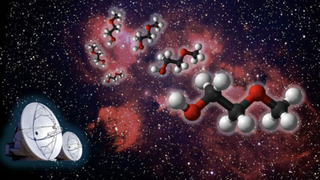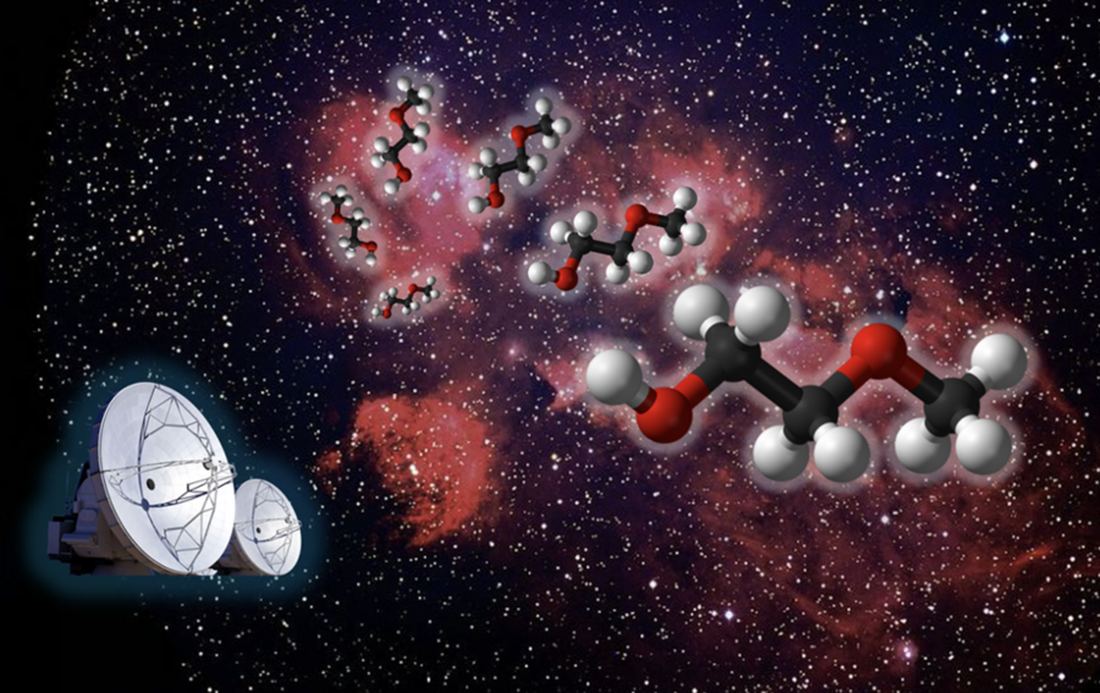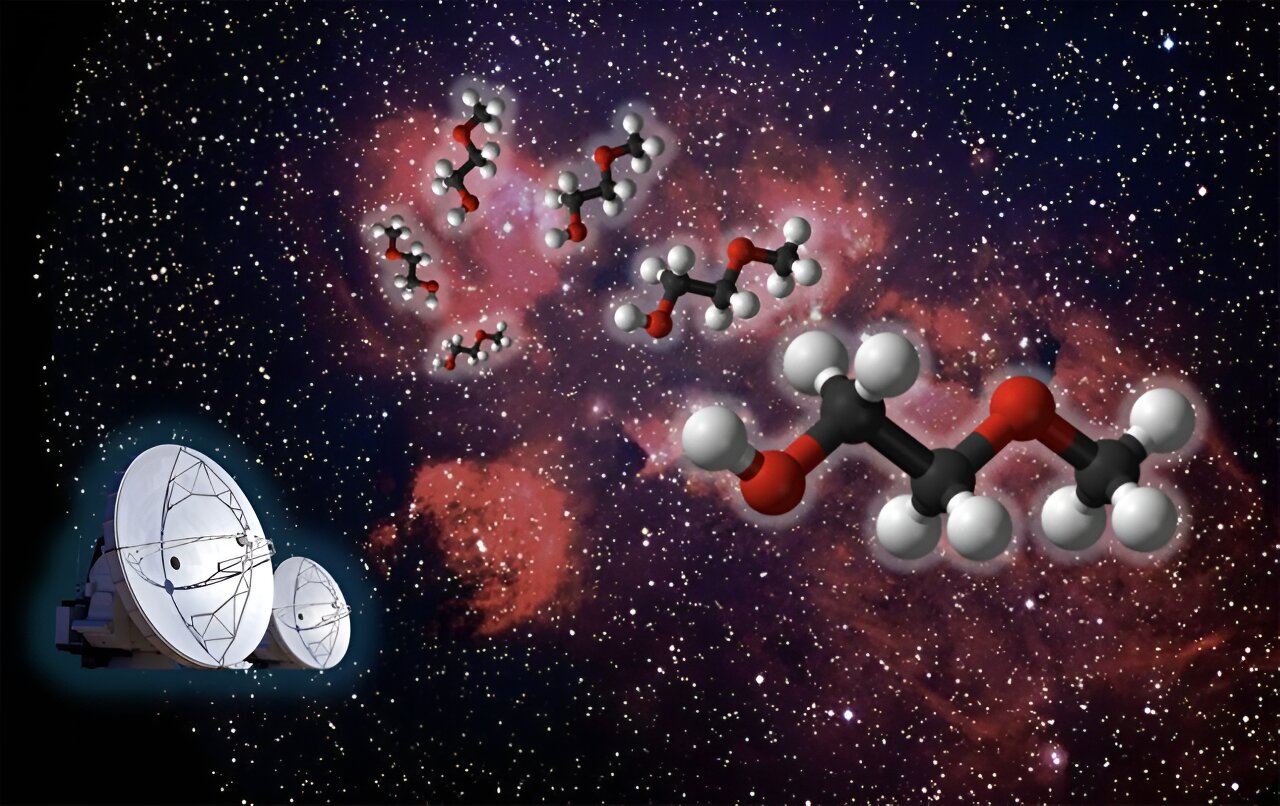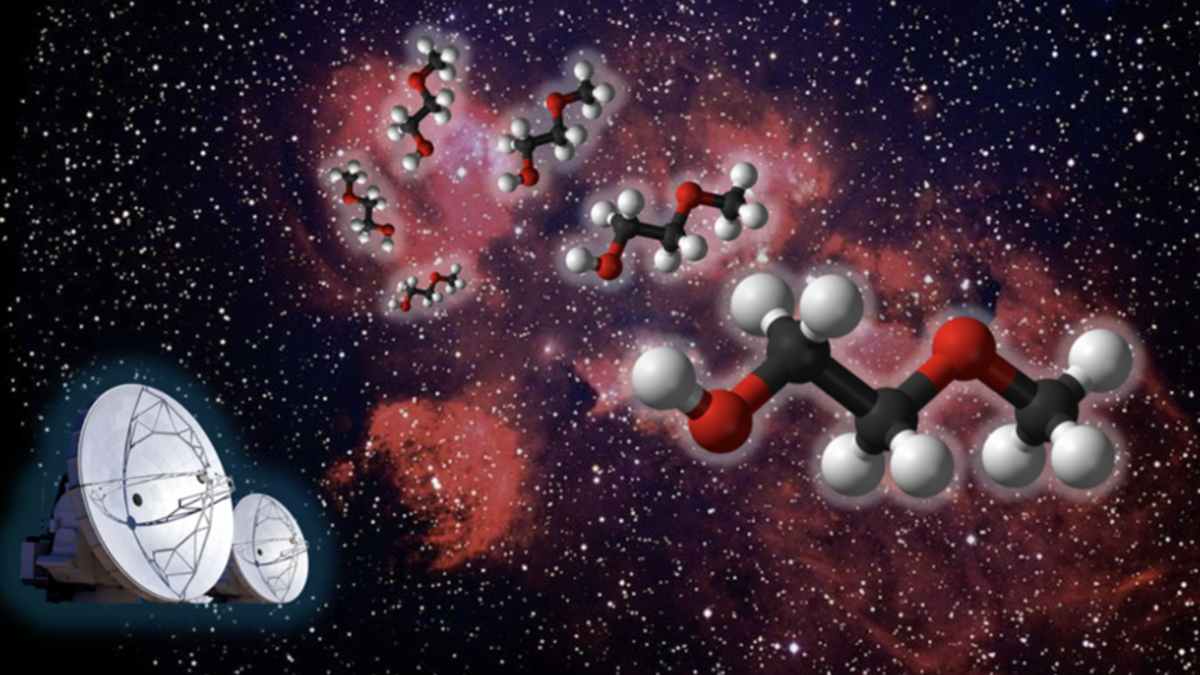
In a groundbreaking discovery, astronomers have detected a complex molecule known as 2-methoxyethanol in the Cat's Paw Nebula, a star-forming region located approximately 5,550 light-years away. This remarkable find marks the largest and most complex methoxy molecule ever discovered in interstellar space, surpassing all others in terms of atomic complexity. The molecule consists of 13 atoms: three carbon, eight hydrogen, and two oxygen atoms. Only six other chemical species detected outside the solar system have more atoms than 2-methoxyethanol.
The discovery was made using a combination of machine learning, lab experiments, and observations from the Atacama Large Millimetre/sub-millimetre Array (ALMA) by a team of scientists led by Zachary Fried, a graduate student at the Massachusetts Institute of Technology (MIT). The researchers identified the molecule's spectral signature in a protocluster in the Cat's Paw Nebula, specifically in NGC 6334I.
The presence of 2-methoxyethanol in space is significant for several reasons. Firstly, it is toxic to bone marrow and testicles on Earth; however, its role may be crucial to star and planet formation in space. Secondly, the molecule was identified using a machine learning model, demonstrating the power of this technology in assisting astronomers with complex data analysis.
The discovery of 2-methoxyethanol also provides an opportunity to study the effects of differing physical conditions on chemistry. It was not found in IRAS 16293-2422B, allowing researchers to compare and contrast the chemical compositions in different star-forming regions and better understand how chemistry evolves during these processes.
In conclusion, the detection of 2-methoxyethanol in the Cat's Paw Nebula represents a major milestone in our understanding of interstellar chemistry. It underscores the importance of using advanced technologies like machine learning and cutting-edge observational tools like ALMA to uncover new knowledge about the universe.





